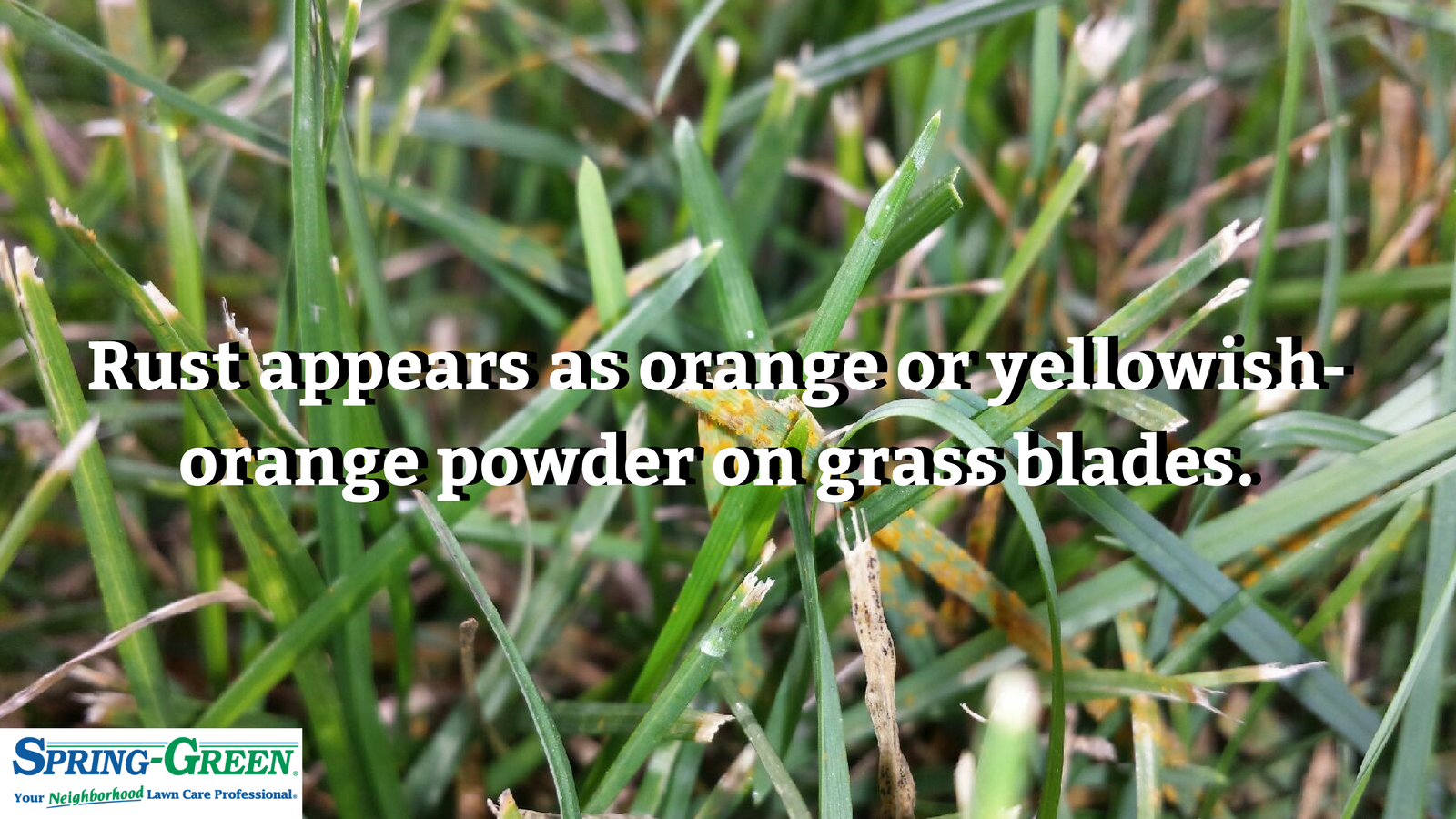Home /
Learn /
Blogs /
How Rust Lawn Disease Develops and Ways to Prevent It
How Rust Lawn Disease Develops and Ways to Prevent It
 If you have ever walked across your lawn in the late summer and notice that your shoes have taken on an orange hue, there is a good chance that your lawn is suffering from a common turf disease called Rust. The lawn disease appears as orange or yellowish-orange powder on grass blades, usually in the late summer to early fall, although I have seen in develop in the spring.
If you have ever walked across your lawn in the late summer and notice that your shoes have taken on an orange hue, there is a good chance that your lawn is suffering from a common turf disease called Rust. The lawn disease appears as orange or yellowish-orange powder on grass blades, usually in the late summer to early fall, although I have seen in develop in the spring.
How Does Rust Develops On Lawns?
The disease can develop on turf that is not growing normally due to several stress factors including drought stress or low fertility. It can also develop during periods of heavy rain fall. Cool nights with heavy dew is another environmental condition that can favor its development. On the other hand, warm, cloudy and humid weather followed by hot, sunny weather can also lead to its development. In other words, just about any type of weather we can get in August can benefit the development of Rust.
The grass species that are most prone to develop Rust include Perennial Ryegrass, Tall Fescue, Kentucky Bluegrass, Zoysia Grass and St. Augustine Grass. Not all cultivars of these grasses are prone to Rust, which is a good idea to check for the cultivars that are less susceptible by searching the NTEP or National Turfgrass Evaluation Program by going to www.ntep.org. Some of the data may seem too technical, but if you scroll through the various reports, you will find a list of the species and cultivars that were tested, where they were tested and the quality ratings of each cultivar.
Rust starts off as small. Yellow flecks on the grass blades and stems. Over time, these flecks grow and expand into raised pustules that are also orange or yellow in color. Once the pustules reach maturity, they will rupture and spread a powdery mass of spores across the turf along with your shoes, pants, lawn mower, dog, etc. In heavily infected areas, the turf can thin out and clouds of rust spores will rise as the turf is disturbed. Once all the spores are released, the pustules will turn black. The spores that are left behind are present to re-infect the turf once the optimal environmental conditions return.
Preventing Rust On Your Lawn
You can reduce the likelihood of the disease developing again by following good cultural practices for proper mowing, watering and fertilizing for the type of turf that is in your lawn.
Proper watering is one of the more critical cultural practices to help prevent outbreaks of Rust. Water deeply, but infrequently to encourage roots to grow deep. Allow the turf to dry out between watering and avoid watering in the evening hours.
There are disease control materials that can be applied as a preventative, but once the pustules form, it is too late to control the disease as it is at the end of its life cycle. Often, an application of fertilizer with nitrogen will stimulate new growth and help the lawn recover from the effects of the disease.
If you see that your shoes are turning orange after walking on your lawn, contact your local lawn care professional at Spring-Green to have your lawn checked for Rust. Spring-Green will develop a program that combat the effects of Rust. If you have ever walked across your lawn in the late summer and notice that your shoes have taken on an orange hue, there is a good chance that your lawn is suffering from a common turf disease called Rust. The lawn disease appears as orange or yellowish-orange powder on grass blades, usually in the late summer to early fall, although I have seen in develop in the spring.
If you have ever walked across your lawn in the late summer and notice that your shoes have taken on an orange hue, there is a good chance that your lawn is suffering from a common turf disease called Rust. The lawn disease appears as orange or yellowish-orange powder on grass blades, usually in the late summer to early fall, although I have seen in develop in the spring.
